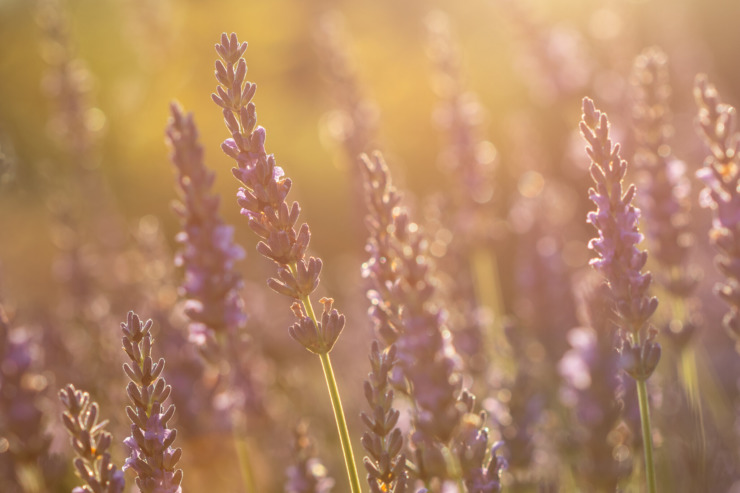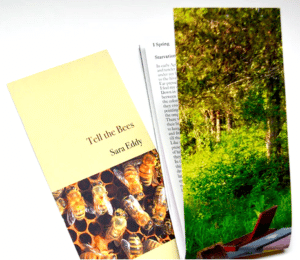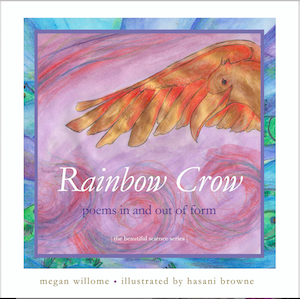What Do the Bees Say?
I recently read A Country Year: Living the Questions, a memoir about beekeeping by Sue Hubbell. With twenty hives, she estimates her property contains “1,200,000 bee souls flitting about, making claim to all the flowers within two miles.”
It’s a reminder to Hubbell that she is not the most important soul in the property, even though her name is on the deed. She takes inventory of the other residents, from copperheads to a bobcat. There is an indigo bunting ghetto that “think they own everything, even the bees.”
They do not own them. And even though Hubbell is known around town as the Bee Lady, she doesn’t own them either. She just steals their honey, musing that living this way has consequences for her future job prospects: “it unsuits me for any other, except possibly robbing banks.”
Poet Sara Eddy keeps bees as well, and she serves as assistant director of the Jacobson Center for Writing, Teaching, and Learning at Smith College, in Northampton, Massachusetts. (She does not rob banks.) She first began beekeeping at a difficult time in her life. In her 2019 chapbook Tell the Bees, she writes, “I’ve got 20,000 bees and hope.”
The poems have her telling things to the bees and, even more “what the bees have to tell us.“ She writes about singing to the bees and about their language in response: “butt waggles / and compound eyes, antennae flicks / secret secretions.” Eddy listens to the “timbre / and pitch of their hum.”
Do you know what other poet listened to that hum and wrote about it? Emily Dickinson, who lived in Amherst, where Eddy also lives.
# 869
Because the Bee may blameless hum
For Thee a Bee do I become
List even unto Me.
Because the Flowers unafraid
May lift a look on thine, A Maid
Alway a Flower would be.
Nor Robins, Robins need not hide
When Thou upon their crypts intrude
So Wings bestow on Me
Or Petals, or a Dower of Buzz
That Bee to ride, or Flower of Furze
I that way worship Thee.
– Emily Dickinson
As with all of Dickinson’s poems, I don’t try to understand it—just dwell in it. Right now there are bees with a “blameless hum” in my Russian sage, lavender in the afternoon heat. And at the Turk’s cap bushes, the bees and the hummingbirds compete for the same red blossoms that are somehow “unafraid” of all this jostling. I’ve written many poems about these “Petals,” none about this “Dower of Buzz.”
How many bee souls call my garden home plot home? What are they telling me?
(Maybe I should put their messages in a bee poem.)
2022 Summer Lights
Sara Eddy is our 2022 Summer Lights poet. Join us for a very special evening with her, online. It’s part of a larger Summer Lights program, where we highlight the work of a poet who is with a Press other than our own. Come and listen to the bees.
Photo by @ S@ndrine, Creative Commons, via Flickr. Post by Megan Willome.
Browse more poems by Emily Dickinson
“Megan Willome has captured the essence of crow in this delightful children’s collection. Not only do the poems introduce the reader to the unusual habits and nature of this bird, but also different forms of poetry as well.”
—Michelle Ortega, poet and children’s speech pathologist
- Perspective: The Two, The Only: Calvin and Hobbes - December 16, 2022
- Children’s Book Club: A Very Haunted Christmas - December 9, 2022
- By Heart: ‘The night is darkening round me’ by Emily Brontë - December 2, 2022




Sara Eddy says
Thank you for these kind words, Megan. It’s a terrific honor to be in put in the company of Dickinson, who terrifies me endlessly even though I grew up right down the street from her house. What a powerhouse she was!
I hope to see you at the reading on Friday–
best,
Sara
Megan Willome says
She terrifies me too, but I’m beginning to enjoy being terrified.
So happy about the upcoming reading!